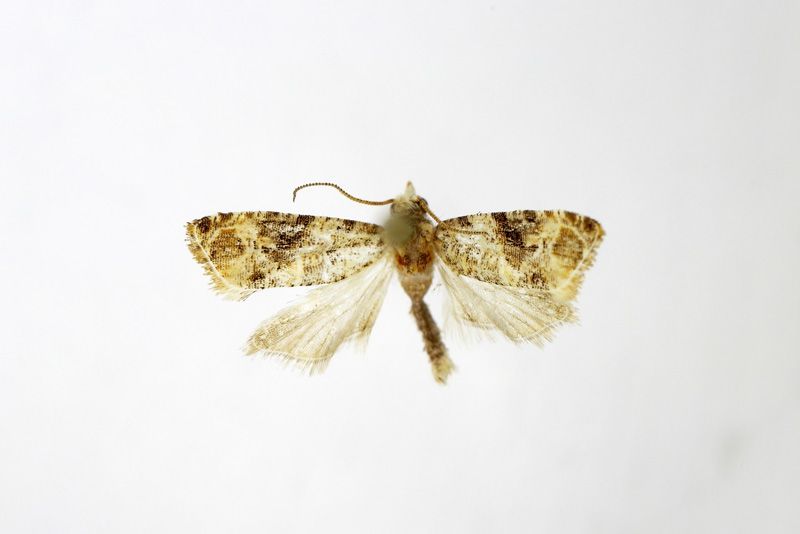
European Grapevine Moth – Lobesia botrana
European Grapevine Moth – Lobesia botrana
Description of Insect:
The European grapevine moth (Lobesia botrana) is a destructive pest that primarily targets berries and berry-like fruits, especially grapes. Native to Europe, this moth has spread to various parts of the world, causing significant damage to vineyards. It belongs to the family Tortricidae, and is also known as European grapeworm.
Adult European grapevine moths are small, measuring approximately 6–8 mm in length with a wingspan of 12–13 mm. Their forewings display a mix of brown, black, and gray patterns, providing excellent camouflage against tree bark and vine foliage. The hindwings are gray with a fringed border. Males and females have similar appearances, although females tend to be slightly larger.
The larvae, which are responsible for most of the damage, hatch as pale yellow and turn greenish or brown as they mature. Fully grown larvae, with short, retracted antennae reach about 8–9 mm in length before pupating into adult moths.
Life cycle of European Grapevine Moth
The European grapevine moth undergoes complete metamorphosis, progressing through four stages: egg, larva, pupa, and adult. The number of generations per year depends on the climate, with warmer regions supporting up to four generations annually.
In early spring, adult moths emerge from pupation and begin mating. Females lay their first batch of 35 eggs for 6 days, on flower buds or newly formed berries. After about one and a half weeks, the larvae hatch and start feeding on flower buds, reducing the number of potential grape berries.
It passes through 5 instars, and feeds for approximately 4 weeks. After maturing, the larva spins a cocoon and pupates within grape clusters or leaf litter for another 2 weeks. The adults emerge from cocoons and live for 1 to 3 weeks.
Damage they cause:
The European grapevine moth is considered one of the most serious pests of grape production due to its direct and indirect damage to vineyards.
- Crop Damage and Yield Reduction Larval feeding damages grape clusters at multiple stages of growth. First-generation larvae feed on flower buds, leading to reduced fruit set and lower overall yield. The second and third generations cause more significant damage by tunneling into berries, making them unsuitable for winemaking or fresh consumption.
- Fungal and Bacterial Infections One of the most severe consequences of European grapevine moth infestations is the increased risk of fungal and bacterial infections. The larvae create wounds in the fruit, allowing pathogens such as Botrytis cinereato infect grape clusters. These infections lead to further fruit decay and lower market value for growers.
- Economic and Agricultural Impact Infestations result in higher production costs for vineyard owners, as they require increased labor, pest control measures, and post-harvest treatments to maintain grape quality. Additionally, the presence of infested grapes can lead to increased grapes cost due to reduced healthy yield.
